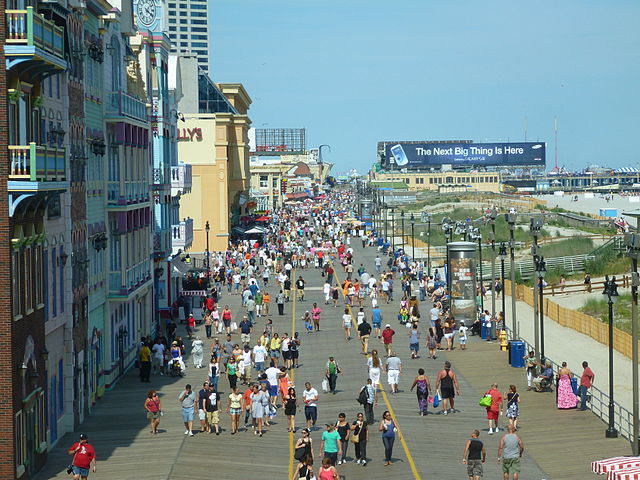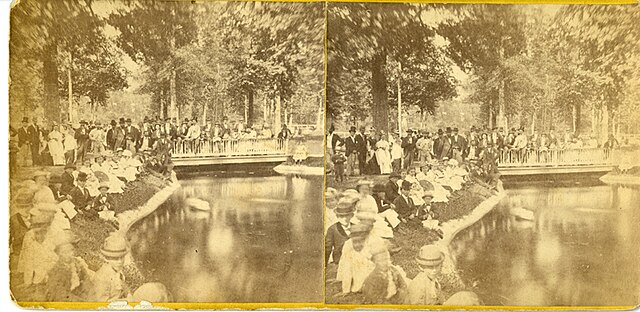A boardwalk is an elevated footpath, walkway, or causeway typically built with wooden planks, which functions as a type of low water bridge or small viaduct that enables pedestrians to better cross wet, muddy or marshy lands. Such timber trackways have existed since at least Neolithic times.
The Atlantic City, New Jersey boardwalk, as seen from Caesars Atlantic City, opened in 1870, as the first U.S. boardwalk. At 5+1⁄2 miles (9 km) long, it is also one of the world's longest, busiest, and oldest boardwalks. New Jersey is home to the world's highest concentration of boardwalks.
A typical nature boardwalk, carrying walkers over wetlands on the Milford Track, New Zealand
Australian soldiers walking along duckboards during the Battle of Passchendaele
A wooden boardwalk allows passage through a lake, such as this one in Plitvice Lakes National Park, Croatia.
An esplanade or promenade is a long, open, level area, usually next to a river or large body of water, where people may walk. The historical definition of esplanade was a large, open, level area outside fortress or city walls to provide clear fields of fire for the fortress's guns. In modern usage, the space allows the area to be paved as a pedestrian walk; esplanades are often on sea fronts and allow walking whatever the state of the tide, without having to walk on the beach.
The Atlantic City, New Jersey boardwalk esplanade, as seen from Caesars Atlantic City, opened in 1870, as the America's first boardwalk. At 5+1⁄2 miles (9 km) long, it is also the world's longest and busiest boardwalk. New Jersey is home to the world's highest concentration of boardwalk esplanades.
Central City Park, Macon, GA; May Day, 1876
Usedom, Western Pomerania, Germany - longest beach promenade in Europe (Ahlbeck here)
Pärnu's beach promenade, Pärnu County, Estonia







